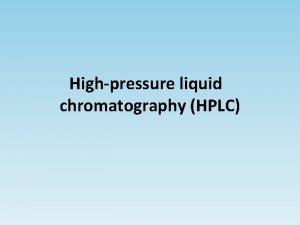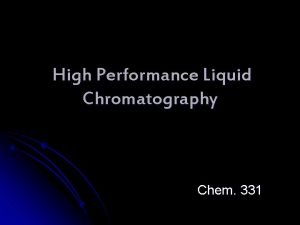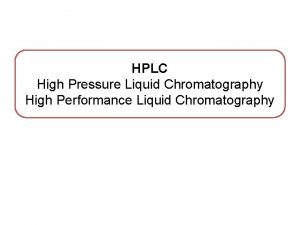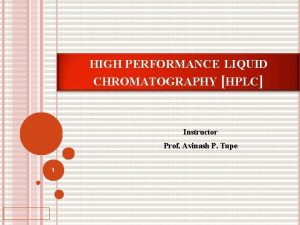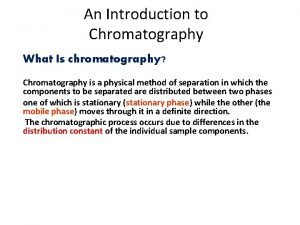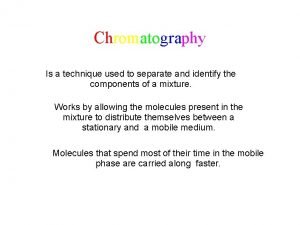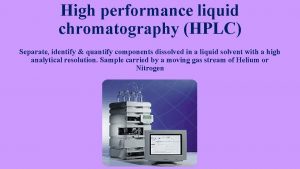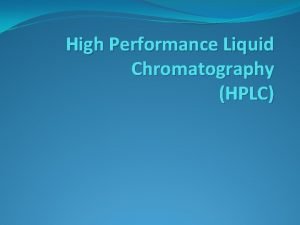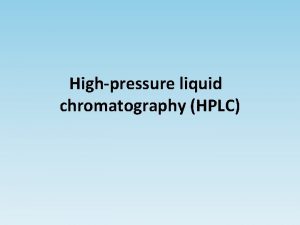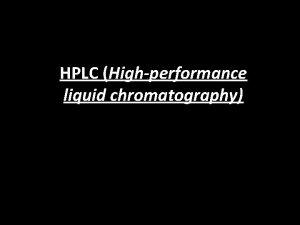High performance liquid chromatography HPLC Separate identify quantify








- Slides: 8

High performance liquid chromatography (HPLC) Separate, identify & quantify components dissolved in a liquid solvent with a high analytical resolution. Sample carried by a moving gas stream of Helium or Nitrogen

• High Performance Liquid Chromatography (HPLC) is a form of column chromatography that pumps a sample mixture or analyt in a solvent (known as the mobile phase) at high pressure through a column with chromatographic packing material (stationary phase). • The sample is carried by a moving carrier gas stream of helium or nitrogen. • HPLC has the ability to separate, and identify compounds that are present in any sample that can be dissolved in a liquid in trace concentrations as low as parts per trillion. • Because of this versatility, HPLC is used in a variety of industrial and scientific applications, such as pharmaceutical, environmental, forensics, and chemicals.

Retention Time: • The retention time of a solute is taken as the elapsed time between the time of injection of a solute and the time of elution of the maximum peak of that solute. • Sample retention time will vary depending on the interaction between the stationary phase, the molecules being analyzed, and the solvent, or solvents used. • As the sample passes through the column it interacts between the two phases at different rate, primarily due to different polarities in the analytes. • Analytes that have the least amount of interaction with the stationary phase or the most amount of interaction with the mobile phase will exit the column faster.


Instrumentation: • Main components in an HPLC system include the solvent reservoir, or multiple reservoirs, a high-pressure pump, a column, injector system, the detector and waste.

• The reservoir holds the solvent, which is referred to as the mobile phase because it moves. There are usually a minimum of two reservoirs in a system, with each holding up to 1000 cc of solvent and usually fitted with a gas diffuser through which helium can be bubbled. • A pump is used to generate a specified flow of the mobile phase. • Although manual injection of samples is still possible, most HPLCs are now fully automated and controlled by computer.

• The injector, or auto sampler, introduces the solvent into a phase stream that carries the sample into the high pressure (up to 400 bar) column, which contains specific packing material needed to effect separation. The packing material is referred to as the stationary phase because it is held in place by the column hardware.

• A detector is needed to see the separated compound bands as they elute from the high pressure column. • The information is sent from the detector to a computer which generates the chromatogram. • The mobile phase exits the detector and is either sent to a waste, or collected, as desired.

